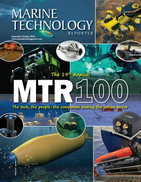The crew of U.S. Coast Guard Cutter Kodiak Island out of Atlantic Beach, North Carolina, in cooperation with the North Carolina Wildlife Resources Commission, helped release 19 rehabilitated sea turtles Dec. 15, off the North Carolina coast.
A North Carolina Aquarium employee, NCWRC employee and family of the Coast Guard crew joined the voyage where species of turtle including Kemp's ridley, green and one loggerhead sea turtle were released near the Gulf Stream approximately 40 miles south of Beaufort.
NCWRC confirmed the location as an ideal place to release the turtles.
There are two dedicated sea turtle rehabilitation centers in North Carolina – Karen Beasley Sea Turtle Rescue and Rehabilitation Center in Surf City and the STAR Center at the North Carolina Aquarium on Roanoke Island.
Two additional North Carolina Aquariums, in Pine Knoll Shores and Fort Fisher, assist with sea turtle rehabilitation when needed.
In late November, 50 sea turtles were transported from Massachusetts to North Carolina for treatment from hypothermia. They were some of the approximate 700 live hypothermic sea turtles found near Cape Cod in Massachusetts since mid-November. The sea turtle facilities in North Carolina were able to help with their rehabilitation.
Many of the Cape Cod turtles need more time in rehabilitation. Some of the 19 released were those found near Cape Cod. Additional turtles that were found injured or sick in North Carolina were released on the trip as well.
The NCSU College of Veterinary Medicine staff at the Center of Marine Sciences and Technology in Morehead City played a key role in managing the care of the turtles that came from Cape Cod, in addition to their ongoing input for all sea turtle rehabilitation in North Carolina.
The NCWRC oversees the NC Sea Turtle Stranding and Salvage Network, which includes the response, care and release of sick or injured sea turtles in North Carolina.
"This was the first time that the Coast Guard Cutter Kodiak Island crew worked with the NCWRC in support of a sea turtle release mission,” said Chief Petty Officer Stephen Fortin, chief engineering petty officer aboard the cutter. “Before us, crews aboard the now-decommissioned cutter Block Island helped complete several turtle releases. The living marine resource mission requires a different mindset and a slower pace than the law enforcement or search and rescue responsibilities we are most commonly associated with, and it represents another of the many hats the Coast Guard wears in partnership with other federal and state agencies. We were fortunate to share the release event with our spouses and children. I hope we've inspired generations of future Coast Guard men and women."
“Working with the Coast Guard has been incredibly helpful in allowing for the offshore release of rehabilitated sea turtles during winter months, when nearshore releases are not possible due to the cold,” said Sara Finn, a coastal wildlife diversity biologist and NCWRC stranding coordinator for the North Carolina Sea Turtle Project. “When we dropped the turtles off to be loaded onto the cutter, I was so pleased to see the families because I knew it would be such a special experience for them, especially the children. Many of them may not have seen a sea turtle, much less 19 of them up close and released back to sea!”
Source: U.S. Coast Guard media relations
•  August 2024
August 2024


